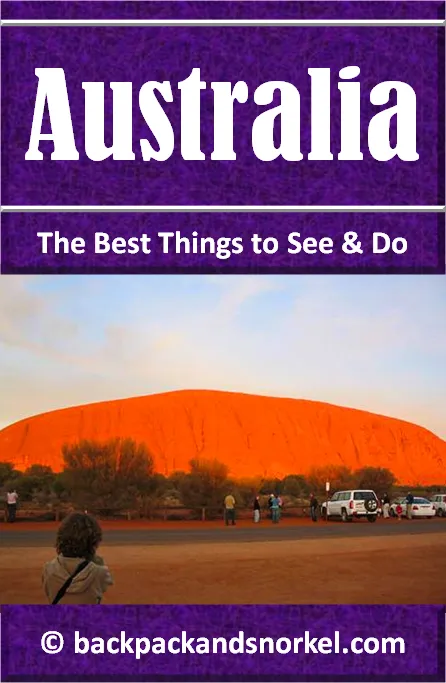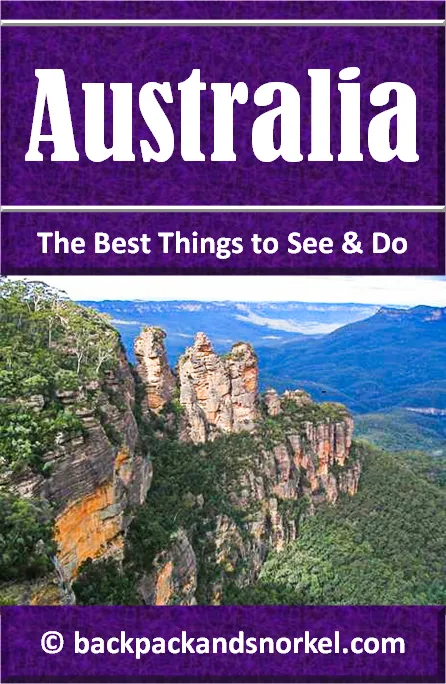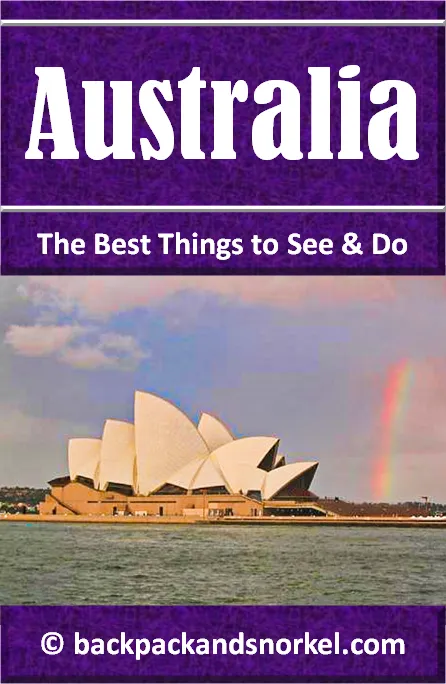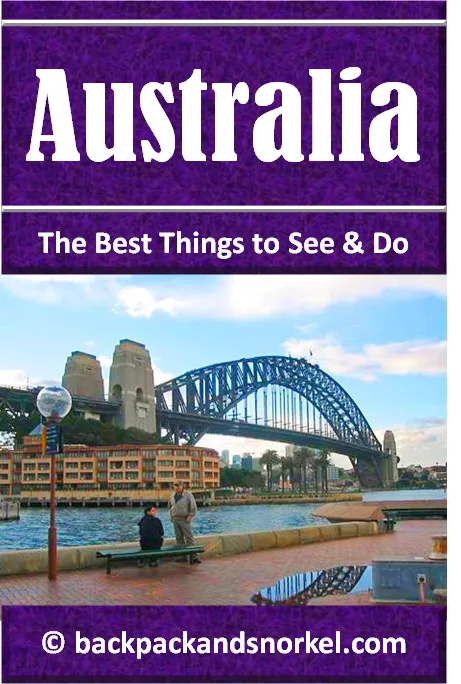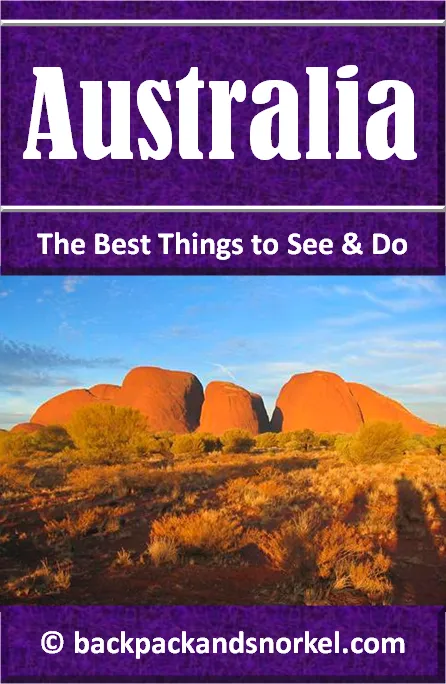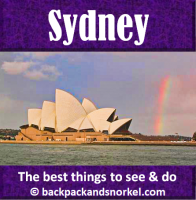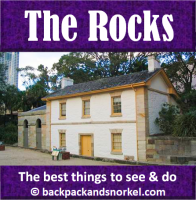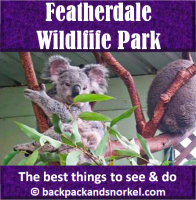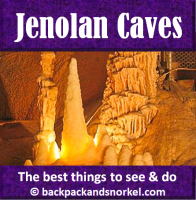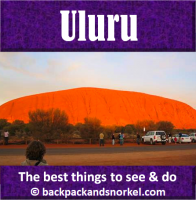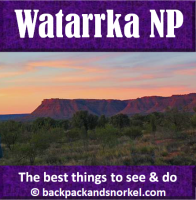Backpack and Snorkel Travel Guide for four days in Sydney - Sydney Purple Travel Guide
This Backpack and Snorkel Travel Guide (Sydney Purple Travel Guide) provides information about the best things to do in 4 days in Sydney and ensures that you will be Making Memorable Moments on a relaxing vacation in Sydney. We have lots of photos so you know what you will see.
If your flight arrives early in the morning, make sure to tell your hotel in advance so that they will have your room available.
Table of contents
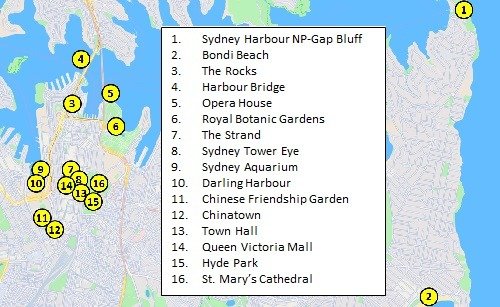
GETTING FROM AND TO THE AIRPORT
The airport lies about 5 miles (8km) outside the city. There are different ways to get from the airport to your hotel.

Taxi
You can find taxi stops outside the terminals. A ride to downtown will take about 20min and cost AU$45-55. It can be significantly longer and more expensive during rush hour traffic. For updated information on taxi fares and taxi companies check this link.
Rideshare services Uber and Ola
Uber and Ola service the Sydney airport. Be aware that calling your ride via the uber or ola app is easy as there is free wifi in the airport (connect to “Free SYD Wifi”). Once you leave the terminal there is no wifi anymore and you may have problems seeing when your driver arrives unless you have a local SIM card or global data plan.
Here is a link to the uber fare estimator.
Here is a link to the Ola website from where you can get their app
Train
The Airport Link train brings you to Central station in 13min for under AU$20 per person. You will need to purchase an Opal card first before you can use the train. The Opal card is available at the train station in the airport.
To get to the train station, follow the “trains” sign in the Arrivals area after you get out of the secure area.
International Terminal 1: After you exit the secure arrivals hall, turn right and walk for about 500ft (150m). The station entrance is past the McDonalds Restaurant.
Domestic Terminal 2: The station entrance is near Virgin Airlines Baggage Carousel 2.
Domestic Terminal 3: The station entrance is near Qantas Airlines Baggage Carousel 1.
The airport stations in the domestic and international terminals are connected to green line T8. Here are useful links:
Rental Car
In the arrivals area of the international terminal T1 are the rental car counters where you can rent a car or pick up the rental car you have reserved.
Bus
Sydney bus line 400 and 420 have bus stops outside terminals T1 and T3. You will need to purchase an Opal Card in advance inside the airport.
Here are useful links:
Shuttle & limousine transfers
Please check the following two providers for shuttle & limousine transfers:
Airport parking
There are quite a few airport parking services available in Sydney and other Australian cities. Find your airport parking with Flyparks, compare prices and make reservations online with the Flyparks service.
Here at Backpack and Snorkel Travel Guides, we typically promote self-guided walking tours.
But we realize that not everybody likes to walk by themselves in a foreign city. So, just in case that you rather go with ab guide: NO PROBLEM! Please see the free GuruWalk and paid Viator tours below.
free GuruWalk tours
paid Viator tours
SYDNEY HARBOUR NATIONAL PARK - GAP BLUFF
Started in 1975, Sydney Harbour National Park is 970 acre that consists of several noncontiguous parks in the Sydney and Port Jackson are:
Bradleys Head
Clark Island
Dobroyd Head
Fort Denison
Georges Head
Goat Island
Middle Head
Nielsen Park
Rodd Island
Shark Island
Quarantine Station at North Head
The Gap Bluff at South Head
Waterway between North Head and Dobroyd Head
You can’t go wrong visiting either part of the park. We opted for The Gap for its easy walking trail – after all, we were exhausted from the long flight –the spectacular views of the cliffs and Tasman Sea and for its proximity to Bondi Beach (map) where we planned to relax from the long flight.
The Gap is an ocean cliff made of Sydney sandstone, which is a very porous yellow-brown stone. It became part of Sydney Harbour National Park in 1982 and is open to the public since 1990.
Originally, this areas was inhabited by the Birrabirragal Aboriginals. Shortly after the First Fleet arrived in 1788, a small signal station was erected here to alert the colony of approaching ships. Two years later, a permanent signal station was built here.
In 1871, The Gap was converted into a military garrison with cannons to defend the Port of Sydney. Several of the barracks can still be seen in this area.
The Gap, the area was opened to the public to offer access to the spectacular cliff views and walks.
When you follow the walking track to the south of the Gap Lookout, you will come to the anchor of the passenger and cargo ship Dunbar. The Dunbar sank about 500 yards further south in a storm in 1857 after it ran aground. Of the 59 crew and 63 passengers on board only one person survived. The anchor was recovered about 50 years later and dedicated here in 1930.
The view of the cliffs is spectacular. Unfortunately, the steep cliffs have made this a popular suicide hot-spot. The city has responded by establishing numerous safety features to prevent suicides like inward-leaning fences, counselling telephone booths, and informational signs.

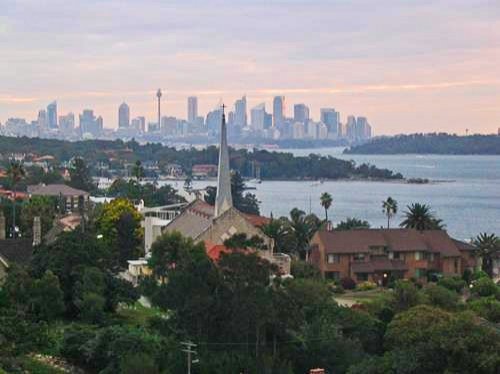
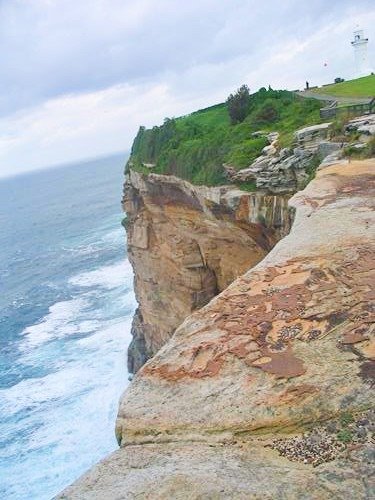
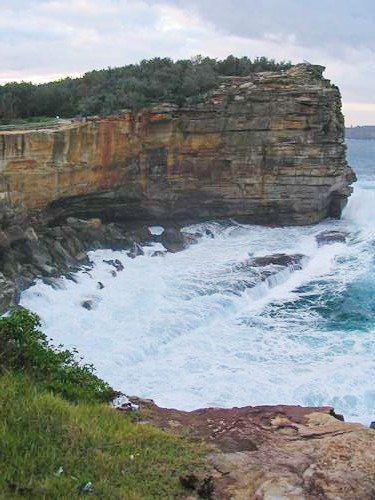
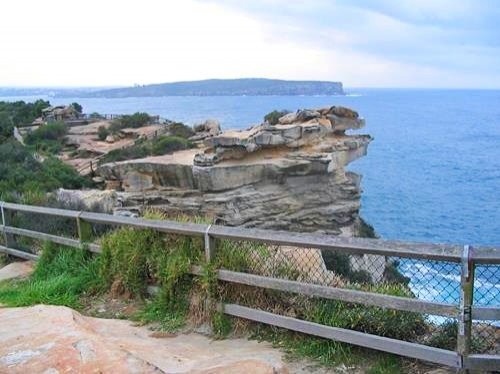
If you have time, walk north for 0.9 miles (1.4km) until you reach the Hornby Lighthouse. It was built in 1858 after the Dunbar ran aground and 121 lives were lost and there was only one survivor. Nearby on the harbor side is Lady Bay Beach where you can take a break.
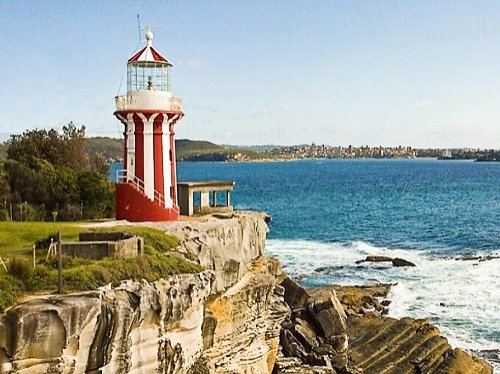
BONDI BEACH
Bondi beach is the name of one of Sydney’s most popular beaches and the name of the surrounding suburb. It is about 0.6 miles (1km) long and there is free wifi on the beach. There are numerous restaurants and stores in this area.
The word “Bondi” comes from the Aboriginal word “Boondi” which means “surf”.
On the south western end of the beach is the Monument to Black Sunday, which commemorates a tragic event in 1938 in which numerous large waves struck the beach and pulled people into the sea resulting in five deaths and more than 250 people who had to be rescued and/or resuscitated.
The southern western end of the beach is not suitable for swimming because of dangerous undercurrents, however surfing is permitted.
There is a safe swimming zone in the north eastern part of the beach.
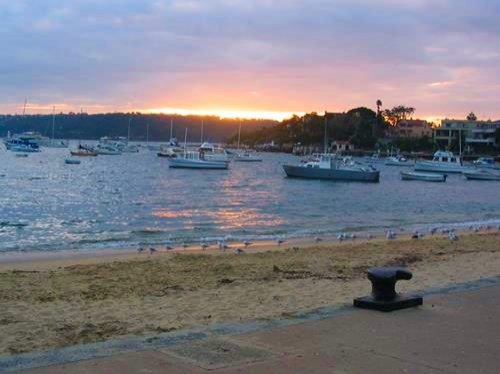

THE ROCKS
The self-guided walking tour of The Rocks can be found here.

HARBOUR BRIDGE
Opened in 1932, Sydney’s Harbour Bridge connects The Rocks with the North Shore and carries automotive, rail, bicycle, and pedestrian traffic. The Sydney Opera and the Harbour Bridge are two of the most recognizable icons of the city. Every year, millions of people across the globe watch the iconic fireworks at the bridge when Australia rings in the new year.
The bridge is a toll road for motorized vehicles when travelling south – there are no tolls for northbound traffic.
The Harbour Bridge is a work of superlatives:
It took 8 years to build the bridge
Approx. 469 buildings were demolished on the North Shore - with little or no compensation was paid
The total cost was AU£6.25mio and it took until 1988 to be paid in full
It is the 7th longest spanning arch bridge in the world (504m, 1654ft)
It has the tallest steel arch (134m, 440ft) measured from the water to the top. On a hot day, through the expansion of the steel, the height can increase by 7.1in (18cm)
It was the world's widest long-span bridge (48.8m, 160ft) until 2012
The weight of the steel is 52,800 tons
79% of the steel was imported from England, the rest is from Newcastle, Australia
Six million rivets (made in Australia) hold the bridge together - the rivets were first heated until red, then hand inserted and the back was rounded with a pneumatic rivet gun
Each coat of paint for the bridge amounts to 7925gal (30,000 liters)
Actor Paul Hogan worked here as a bridge painter before he became famous
The two pylons at either end stand 292ft (89m) tall and are made from concrete and with granite. The pylons do not serve any structural purpose of the bridge. They were only added to alleviate public concern about the structural integrity of the bridge
The north-western pylon contains the traffic management garage for bridge maintenance vehicles and a venting chimney for fumes from the Sydney Harbour Tunnel
The north-eastern pylon contains a maintenance shed for the bridge and a venting chimney for fumes from the Sydney Harbour Tunnel
The south-western pylon is used by the New South Wales Roads and Traffic Authority (RTA)
The south-eastern pylon houses a museum and tourist center and has a 360° vista point
The Sydney Harbour Tunnel was completed in 1992 as a relief for the Harbour Bridge which was overwhelmed with traffic
Since the Harbour Bridge is such a magnificent and important landmark, people have often tried, illegally, to climb it and risked their lives to enjoy the wonderful views of the opera and the city. Since 1998, climbing the bridge is legal and safe with guided tours from BridgeClimb. Four different tours which operate by day and some by night are available and even children (min. age 8 and min. height 4ft (1.2m)) are allowed and pay a reduced rate. The tours last between 2 ½ to 3 ½ hours and you will be harnessed for your safety.
Take a close look at the daytime photo below – do you see the BridgeClimb group at the summit?
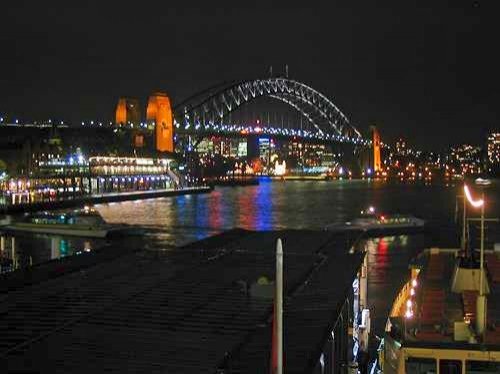

SYDNEY OPERA HOUSE
The Sydney Opera house and Uluru (Ayers Rock) are probably the two most recognizable landmarks of Australia. Opened in 1973, but designed almost 30 years earlier, by Danish architect Jørn Utzon, the Sydney Opera House is a multi-venue performing arts center that hosts more than 1,500 performances and a combined audience of 1.2 million people every year. It is situated at Bennelong Point in Sydney Harbour and across the water lies the Harbour Bridge, another one of Sydney’s landmarks.
Being a major tourist attraction and a UNESCO World Heritage Site, the opera building sees about 8 million visitors annually, of which about 350,000 take at least one of the guided tours that are offered.
The opera offers different tours, lasting between 1h and 1 ½ hours. There is even a 45min guided virtual tour.
Here is some more information that characterizes the building:
Design: modern expressionist
Area covered 4.4 acres (1.8 ha)
Length: 600ft (183m); widest point: 394ft (120m)
Foundation: 588 concrete piers as deep as 82ft (25m) below sea level
Tallest point: 220ft (67m) above sea level – comparable to a 22 story building
Roof: made of 2194 precast concrete shells weighing up to 15 tons; each represents a section of a sphere with a radius of 246ft 8.6 in (75.2m)
The roof is decked with 1,056,006 tiles in two colors (glossy white and matte cream tiled). Look closer and you will see that the tiles for a striped pattern.
Other exterior materials are: glass and pink granite from Tarana, Australia
Comment of the jury that selected Jørn Utzon’s design: The drawings submitted for this scheme are simple to the point of being diagrammatic. Nevertheless, as we have returned again and again to the study of these drawings, we are convinced that they present a concept of an Opera House which is capable of becoming one of the great buildings of the world.



ROYAL BOTANIC GARDEN
Directly south of the Opera House lies the 72 acre (29ha) Royal Botanic Garden. This garden opens at 7am year-round and closes, depending on the month, between 5pm and 8pm. Admission is free.
Opened in 1816 on land that belonged to an old farm that was established in 1788 and that failed, it is the oldest scientific institution in Australia.
The Royal Botanic Garden comprises several topical gardens:
Lower Gardens
Tropical Garden
Bicentenary Garden
Australian Native Rockery
Herb Garden
HSBC Oriental Garden
Dragon Tree Lawn
Southern African Garden
Middle and Upper Gardens
Australian Rainforest Garden
Sydney Fernery
Palm Grove
Cadi Jam Ora – First Encounters
Cacti & Succulent Garden
Camelia Garden
If this is information overload for you, look no further and join one of the available tours.
THE STRAND
Opened in 1892, The Strand Arcade is located in the heart of Sydney’s Central Business District. It is 340ft (104m) long and connects George Street with Pitt Street. When it opened, this 3 story arcade represented the very best in shopping center design and was described as "The finest public thoroughfare in the Australian colonies". Today, it is the only remaining arcade of this type in Sydney.
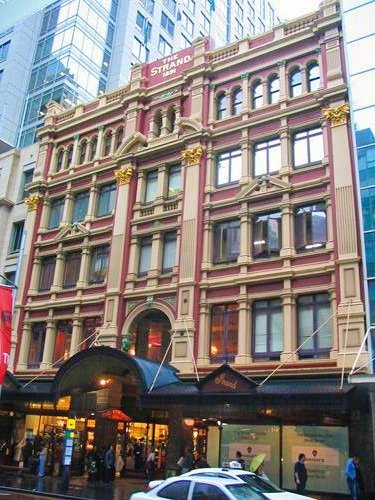
SYDNEY TOWER EYE
Opened to the public in 1981, the Sydney Tower is the tallest structure and the second tallest observation tower in the Southern Hemisphere. Its total height is 1,014ft (309m) or 1,073ft (327m) above sea level. The observation deck is located at an elevation of 915ft (279m) and the open air glass floor Skywalk platform that encircled the Tower is 879ft (268m).
At full speed, the high speed elevators take 45s to reach the observation deck. Instead of using the elevator, every year people race up the 1,504 stairs from Pitt Street Mall to the Observation Deck to raise money for the Cancer Council.
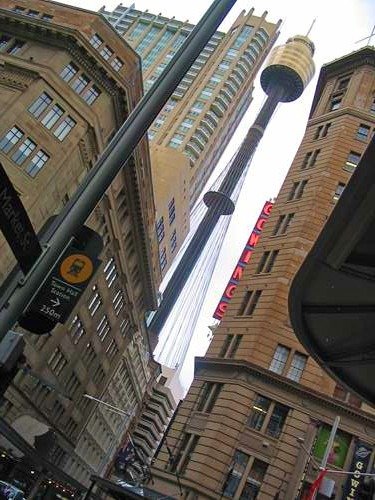
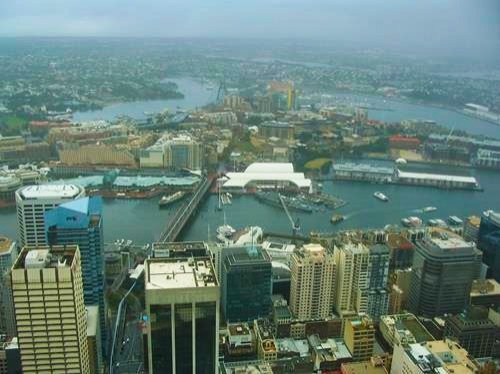
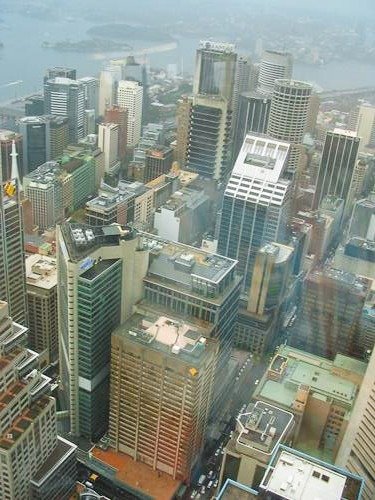
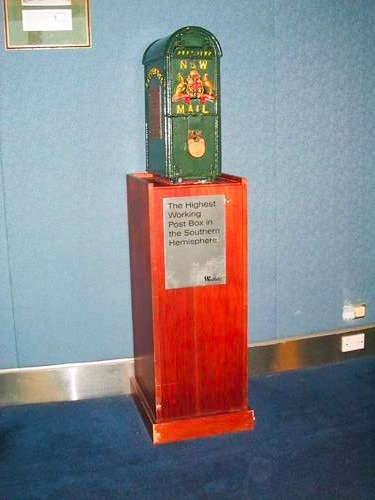
SYDNEY AQUARIUM – NOW: SEA LIFE SYDNEY AQUARIUM
Opened in 1988, the Sea Life Sydney Aquarium is one of Sydney’s top tourist attractions and more than half of the visitors come from overseas.
The Aquarium has more than 700 species of sea creatures including more than 13,000 fish from most of Australia's water habitats in these exhibit areas:
Day and Night on the Reef
Penguin Expedition
Shark Valley
Dugong Island
Discovery Rockpool
South Coast Shipwreck
Sydney Harbour
Jurassic Seas
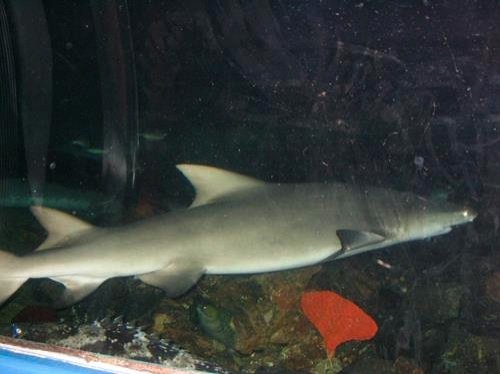
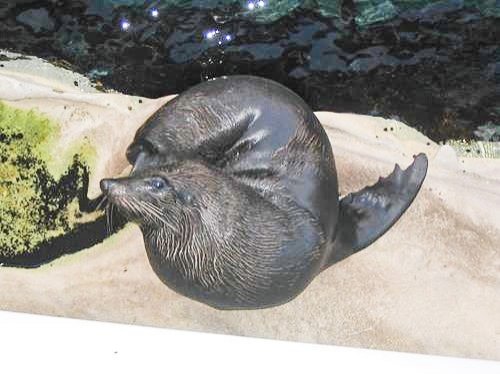
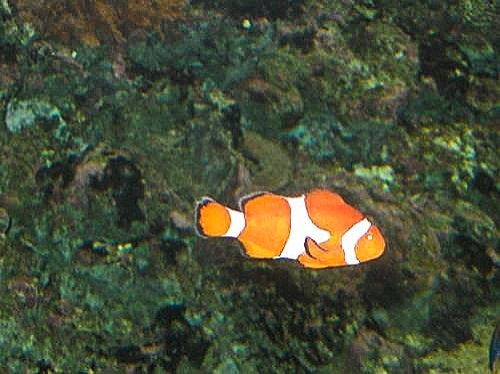

DARLING HARBOUR
Originally named Long Cove, Darling Harbour was often called Cockle Bay until Ralph Darling, the New South Wales governor from 1825 to 1831, named it after himself.
Today, Darling Harbour is home to several tourist attractions:
Australian National Maritime Museum
Chinese Garden of Friendship
Cockle Bay Wharf (bars and restaurants)
Darling Harbour Street Art Trail
IMAX Theatre Sydney
International Convention Centre (ICC) Sydney
Madame Tussauds
Powerhouse Museum
SEA LIFE Sydney Aquarium
WILD LIFE Sydney Zoo
The Star Sydney (casino & entertainment)
Tumbalong Park
Water taxis and jet boat tours depart from here
CHINESE GARDEN OF FRIENDSHIP
The Chinese Garden of Friendship is a 3 acre (1ha) Chinese garden that was designed by Sydney's sister city Guangzhou, China and modelled after the classic private gardens of the Ming Dynasty. It was opened in 1988 for Sydney's Bicentennial Celebrations.
Originally, this site was under water and, starting in 1850, it was slowly filled in and used for industrial purposes like ship building and repairs, workshops, metal foundries and food milling factories.
All plants in the Chinese Garden of Friendship were sourced in New South Wales. The two lychee trees were planted by visiting governors of the Chinese Guangdong province in 2009 and 2015. Lychee was chosen as it is one of the four great fruits of Lingnan region (together with banana, paw paw and pineapple) of which Guangdong is a part of.
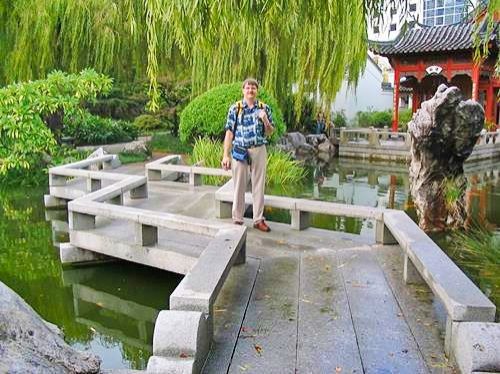
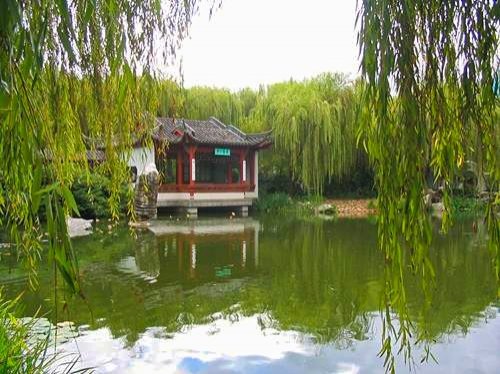
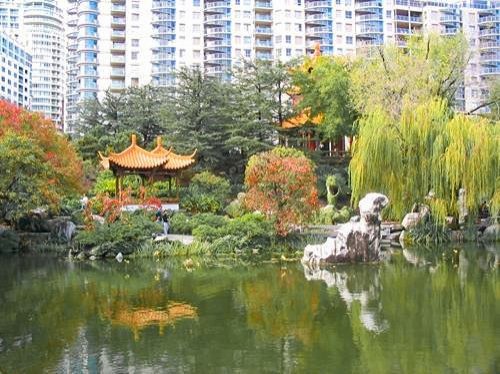

CHINATOWN
Sydney has one main Chinatown and several smaller Chinatowns in the suburbs. The main Chinatown covers much of the Haymarket area (between Darling Harbour and Central Station) with a concentration at Dixon Street, where there are lots of Chinese restaurants and stores. Dixon Street has a paifang (traditional Chinese gateway) at its northern and southern end.
Chinatown was settled by Chinese immigrants since 1828, but mostly in the 1850s during Australia’s gold rush, mainly with people from China’s southern Guangdong and Fujian provinces.
Interesting tidbit: David Bowie's music video for his 1983 single “China Girl” played and was filmed in Sydney’s Chinatown.



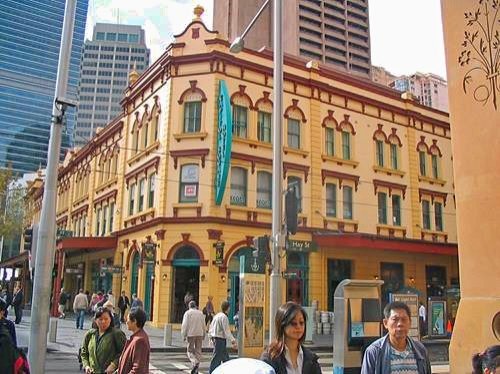
TOWN HALL
Built from 1869 to 1889 within the former Old Sydney Burial Ground, which was Sydney's first permanent cemetery from 1792 and 1820 and which had deteriorated afterwards.
When the town hall was built, disturbed graves were reinterred in a memorial in Rookwood Cemetery. Undisturbed graves were left untouched.
The building was built in two main stages and underwent many alterations afterwards:
Stage I 1869-1880: vestibule and offices
Stage II 1880-1889: two halls
The Town Hall was an important venue for the discussion, formation and official launch of the Commonwealth of Australia.
Before the Sydney Opera House was built, the Sydney Town Hall was the major venue where receptions for guests, including royalty, were held.
Here is some more information:
The Town Hall was built in composite brick and stone construction using local Sydney “yellowblock” sandstone
The design is the grand Victorian Second Empire style and it was inspired by the French Second Empire Hotel de Ville in Paris
The clock tower was completed in 1873 and the clock was installed in 1884
The Grand Organ is located in Centennial Hall. It is the world's largest pipe organ with tubular pneumatic action and it was built from 1886 to 1889 and installed in 1890
Guided tours are available, but they have to be pre-arranged.
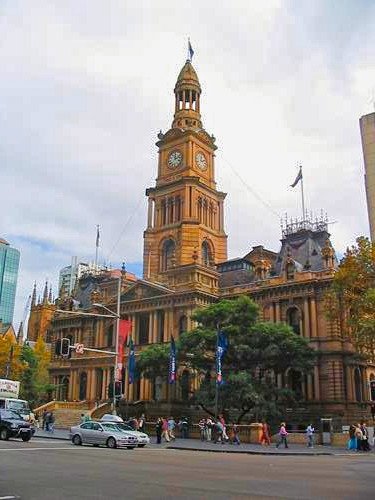
QUEEN VICTORIA BUILDING AND MALL (QVB)
Opened in 1898, this Romanesque Revival building’s dominant feature is the central dome which consists of a copper-sheathed exterior, an interior glass dome and is topped by a domed cupola. The dome is 62ft (19m) in diameter and the distance from the ground to top of the cupola 196ft (60m).
In addition to the main dome, there are smaller 20 smaller domes in different sizes on the roof. More light is allowed into the 98ft (30m) wide and 620ft (190m) long building through beautiful stained glass windows.
The facade of the building in Romanesque and Byzantine style and much of the tilework are original.
The northern end of the building was previously the “Grand Ballroom” – it is now a tea room.
Two mechanical clocks feature dioramas and moving figures from moments in history. The Royal Clock activates on the hour and displays six scenes of English royalty and the Great Australian Clock includes 33 scenes from Australian history. An Aboriginal hunter continuously circles around the outside of the clock, symbolizing the never-ending passage of time.
When the building opened in 1898, it provided business locations for coffee shops, hairdressers, florists, mercers, tailors, and a concert hall. Unfortunately, only 47 out of the approx. 200 available spaces were leased and it took until 1917 that the building reached its maximum tenancy rate.
Over its history, the QVB had been neglected many times and barely escaped demolition many times. Fortunately, in 1971, the decision was made to preserve the building and to restore it to its former glory. This was done and the building reopened in late 1986 just in time for the busy Christmas shopping season.
Enjoy shopping on four levels inside the QVB!


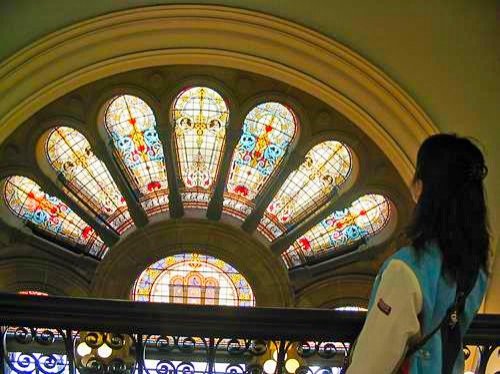
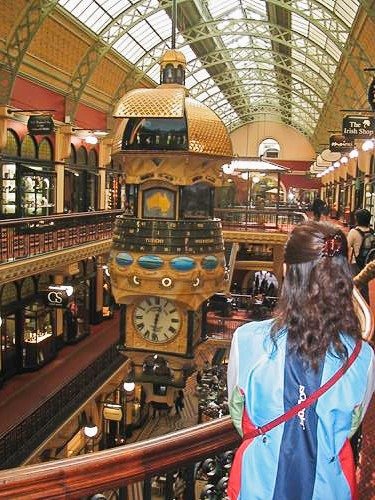
HYDE PARK
The 40-acre (16.2ha) Hyde Park was built from 1810 to 1927 on swampy marches where Aborigines used to hunt ducks prior to the European settlement. It is the oldest public parkland in Australia.
The northern end of the park is dominated by the Archibald Fountain which was donated by J. F. Archibald to honor Australia's contribution to France during World War I.
At the southern end of the park is the ANZAC War Memorial behind the Pool of Reflection. ANZAC stands for “Australian and New Zealand Army Corps”.
At the start of World War I, Australia had a population of less than 5 million of which 416,000 men enlisted. At the end of the war, 60,000 were killed and another 156,000 were wounded.

ST. MARY’S CATHEDRAL
St Mary's Cathedral is the cathedral church of the Roman Catholic Archdiocese of Sydney and the seat of the Archbishop of Sydney.
The foundation stone of current cathedral was laid in 1868 on the site of former St. Mary’s churches which were destroyed by fire. Even though the dedication mass was held in 1882, it took until 2000 to finish the building that you see today.
The church is built in the Gothic Revival architectural style of the 19th century and oriented in north-south direction instead of the usual east-west direction. It is also the longest church in Australia, but not the biggest.
While the design is based on the style of England’s Lincoln Cathedral, the entrance façade is loosely based on the design of the Notre Dame de Paris.

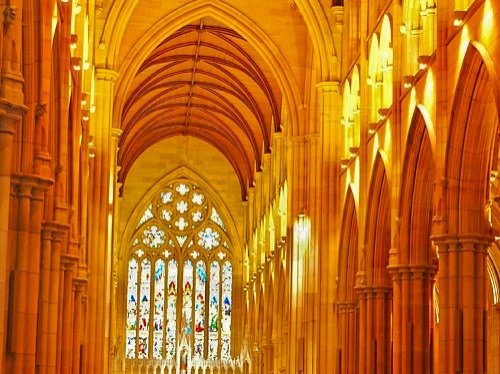
MANLY BEACHES
Capt. Arthur Phillip about the indigenous people living in what is now Manly Beach: "Their confidence and manly behavior made me give the name of Manly Cove to this place".
Please be advised that there are the harbor facing Manly Cove beaches (Manly Cove Beach and East Manly Cove Beach) and the ocean facing Manly Beach. The Manly Cove beaches and Manly Beach are connected by the ¼ mile (450m) pedestrian street “The Corso”. The Corso is one of Manly's main streets for shopping and dining.
Among the roughly 100 beaches in the Sydney area, Manly Beach and Bondi Beach are by far the most popular beaches.
While there are different ways to come to the Manly Beaches, taking a public ferry (30min) or private fast ferry (18min) from Circular Quay to Manly Cove is a good idea as the ferry ride provides wonderful views of Sydney Harbour and it passes many of Sydney’s major attractions: Harbour Bridge, Opera House, Bradleys Head, South Head, Manly North Head, Dobroyd Head.

What part of Australia do you want to expolore now?
Other popular Purple Travel Guides you may be interested in:
Like this Backpack and Snorkel Purple Travel Guide? Pin these for later:
